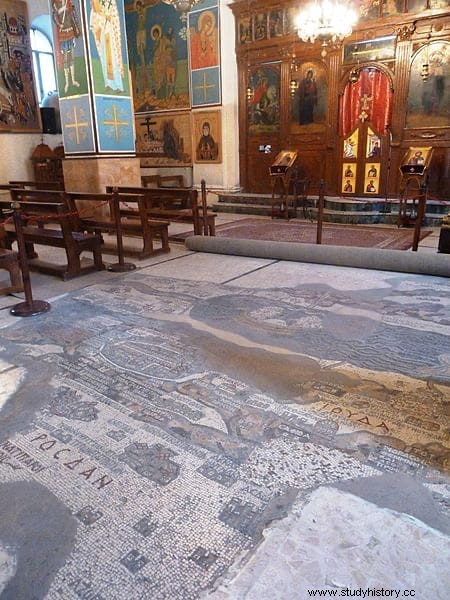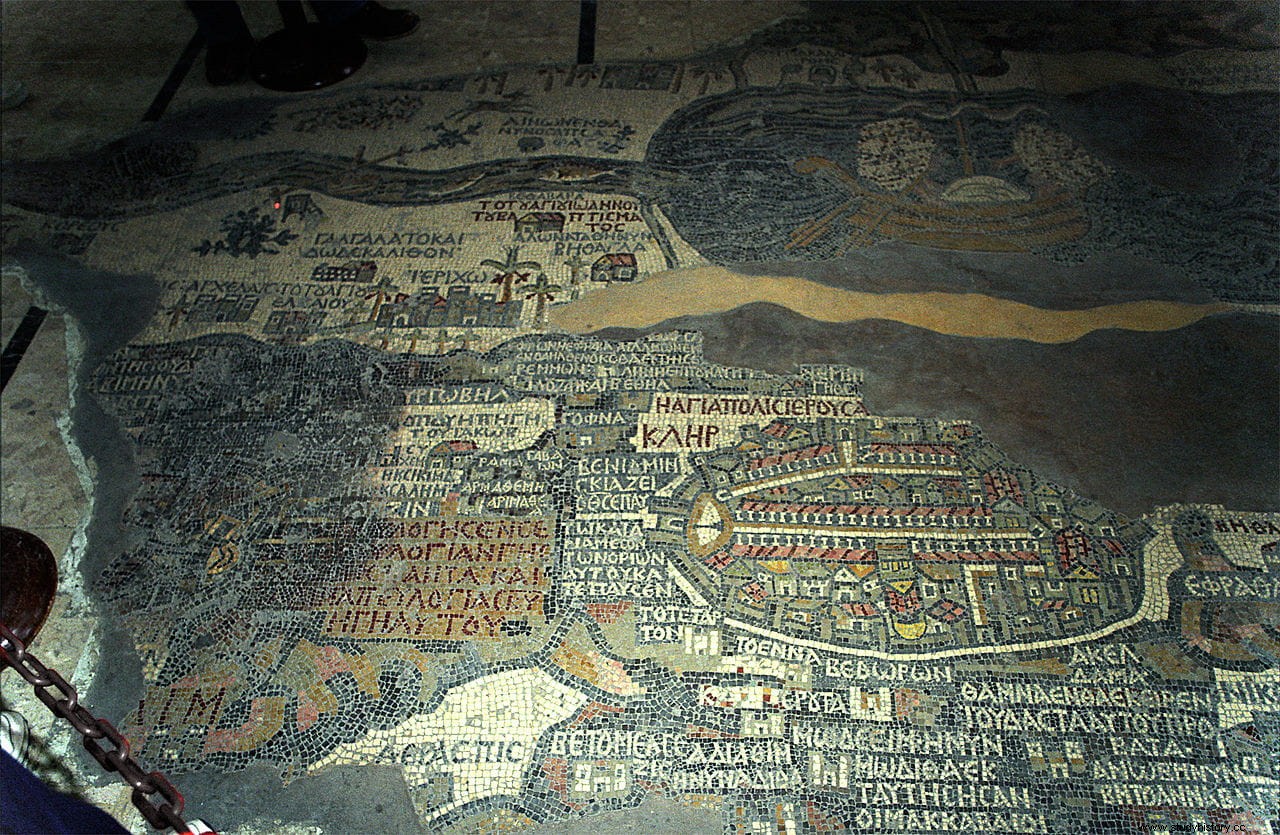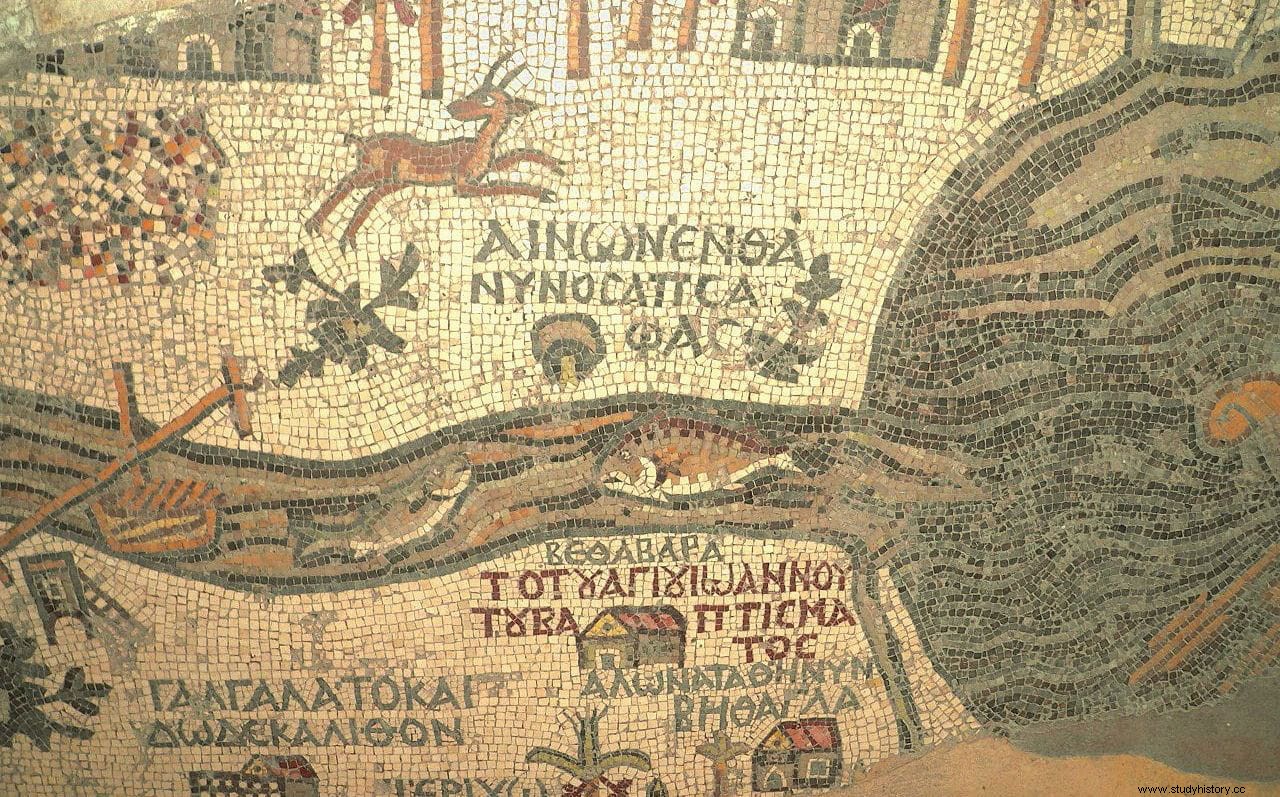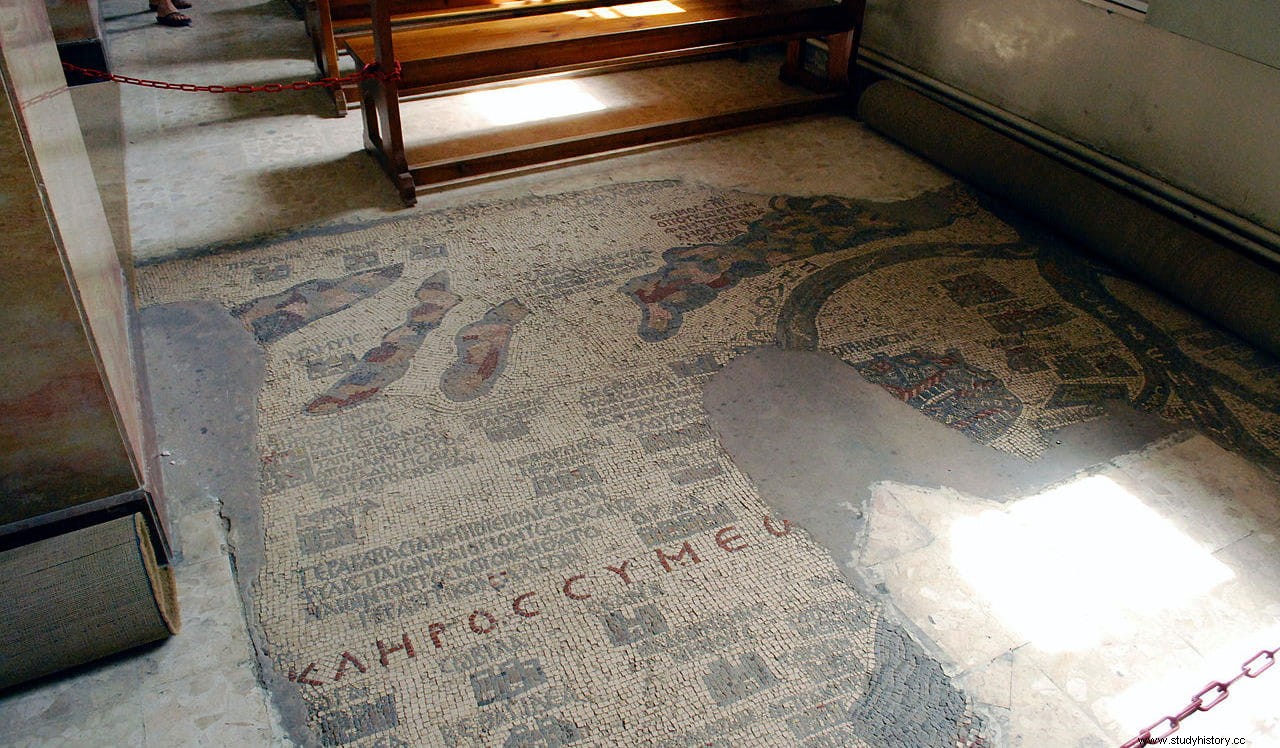About 35 kilometers southwest of Amman, the capital of Jordan, is the town of Madaba, famous for the large number of mosaics from the Byzantine and Umayyad eras that it houses in buildings from these times (it is actually known as the city of the mosaics ).
One of these mosaics, popularly known as the Madaba mosaic , is located on the floor of the apse of the church of Saint George, an Orthodox basilica still in use located near the north gate of the city.
It was discovered in 1896, a few years after 90 Arab Christian refugee families settled in the city under the leadership of two Italian priests from the Latin Patriarchate of Jerusalem.

When work began on a new church on the ruins of the previous Byzantine one, the workers who were going to pave the ground began to remove rubble and the mosaic appeared. What remained of it was a large section in the central and south aisles, along with three isolated fragments situated between the first and third rows of columns, beyond the chancel.
This mosaic from the 6th century AD. is a map of the Middle East that contains the oldest surviving cartographic representation of the Holy Land, Jerusalem, and the Nile Delta.

It is not oriented to the north but to the east, in such a way that when the faithful went to the altar they could see and read the entire map. Despite the limited space, it is clear that the towns are represented following the network of Roman roads of the time.
It has dimensions of 15.70 by 5.60 meters, although if the lost parts are added, it is calculated that it could have measured 21 by 7 meters. More than 2 million tesserae were used in its preparation.
The area covered goes from Tire and Sidon to the Nile delta, and from the Mediterranean Sea to the Arabian desert. The Dead Sea is represented with two fishing boats, some bridges that join the banks of the Jordan River, fish in the rivers and the sea, a lion hunting a gazelle in the desert of Moab, the city of Jericho surrounded by palm trees, and numerous places related to the Bible, such as Bethlehem.
All sites have their corresponding name in Greek, and in some cases biblical quotes.

It seems that the artists took as a reference the Onomasticon of Eusebius, a directory of geographical places and sites compiled in the fourth century AD. to represent and name on the map about 150 cities and villages.
The central element of the map, the largest and most detailed, is the city of Jerusalem, where you can see its main streets and several of the structures that existed in the Byzantine era, such as the gates and walls, the Church of the Holy Sepulchre, the tower of David and the Cardo Maximus, the colonnaded avenue that crossed the city from north to south from Damascus Gate to Zion Gate.
The approximate date of its creation is known because the Nea Church (New Church of the Mother of God) erected by Emperor Justinian and dedicated on November 20, 542 AD appears on the map. However, no buildings built in Jerusalem after 570 appear, which limits the dating of the map to 542-570 AD.

Cities such as Neapolis, Ashkelon, Gaza or Pelusium are also represented, in such a detailed way that they could be considered street maps.
The mosaic suffered damage due to fires in the church, to the works of the new basilica and due to humidity, despite the fact that since its discovery the patriarch had ordered its protection and the placement of iron railings around it. For years numerous researchers studied, copied and drew it.

In 1964 the Volkswagen Foundation paid for its restoration with 90,000 German marks of the time, which was carried out by the archaeologists Heinz Cüppers and Herbert Donner, from the University of Göttingen. These found it in a bad state patent in their initial study:

The Madaba mosaic is the oldest of its kind (of a geographical nature) known, since no floor mosaic with representation of an earlier map has been found.
Thanks to him, the topographical location of the city of Ashkelon could be located. In 1967 archaeological excavations in Jerusalem found that the Nea Church and the Cardo Maximus were exactly where the mosaic placed them.
Not only that, the mosaic continues to provide surprises. In 2010 further excavations found an unknown road running through the center of Jerusalem, just as it was depicted on the map.
